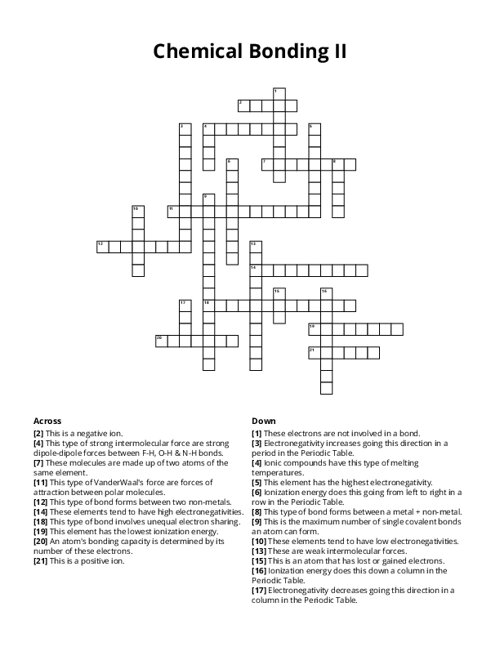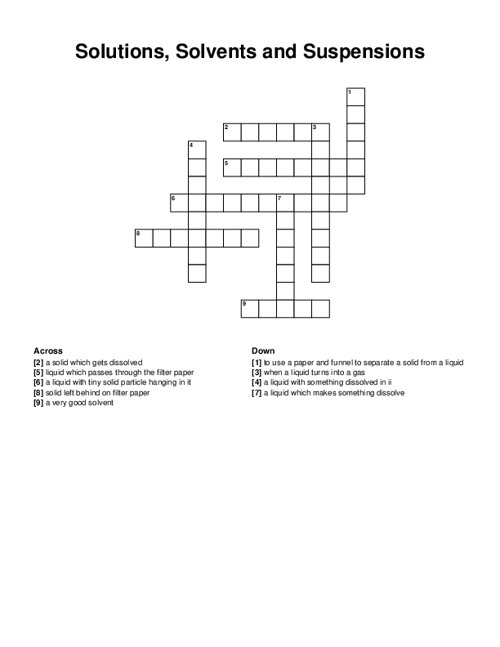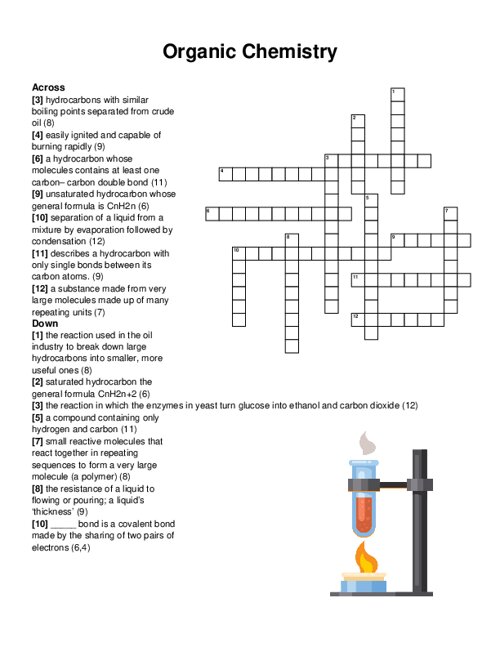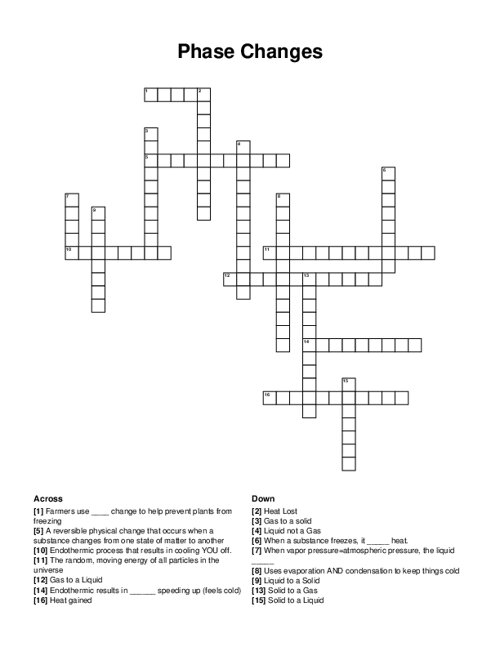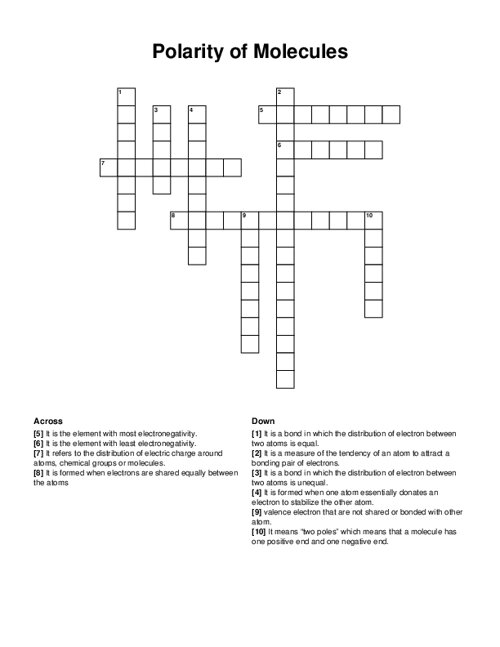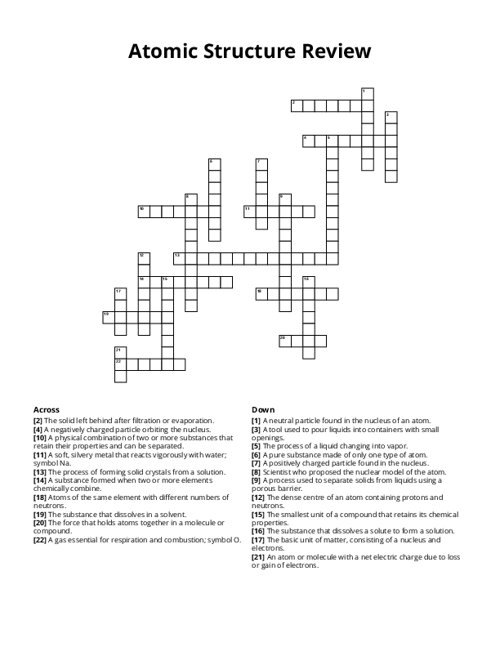Chemical Bonding II Crossword Puzzle
Download and print this Chemical Bonding II crossword puzzle.
QUESTIONS LIST:
- down : electronegativity decreases going this direction in a column in the periodic table.
- dipole-dipole : this type of vanderwaal's force are forces of attraction between polar molecules.
- decreases : ionization energy does this down a column in the periodic table.
- vanderwaals : these are weak intermolecular forces.
- bonding capacity : this is the maximum number of single covalent bonds an atom can form.
- francium : this element has the lowest ionization energy.
- polar covalent : this type of bond involves unequal electron sharing.
- ionic : this type of bond forms between a metal + non-metal.
- fluorine : this element has the highest electronegativity.
- anion : this is a negative ion.
- bonding : an atom's bonding capacity is determined by its number of these electrons.
- diatomic : these molecules are made up of two atoms of the same element.
- lone pair : these electrons are not involved in a bond.
- increases : ionization energy does this going from left to right in a row in the periodic table.
- left to right : electronegativity increases going this direction in a period in the periodic table.
- non-metals : these elements tend to have high electronegativities.
- hydrogen : this type of strong intermolecular force are strong dipole-dipole forces between f-h, o-h & n-h bonds.
- covalent : this type of bond forms between two non-metals.
- cation : this is a positive ion.
- high : ionic compounds have this type of melting temperatures.
- ion : this is an atom that has lost or gained electrons.
- metals : these elements tend to have low electronegativities.
